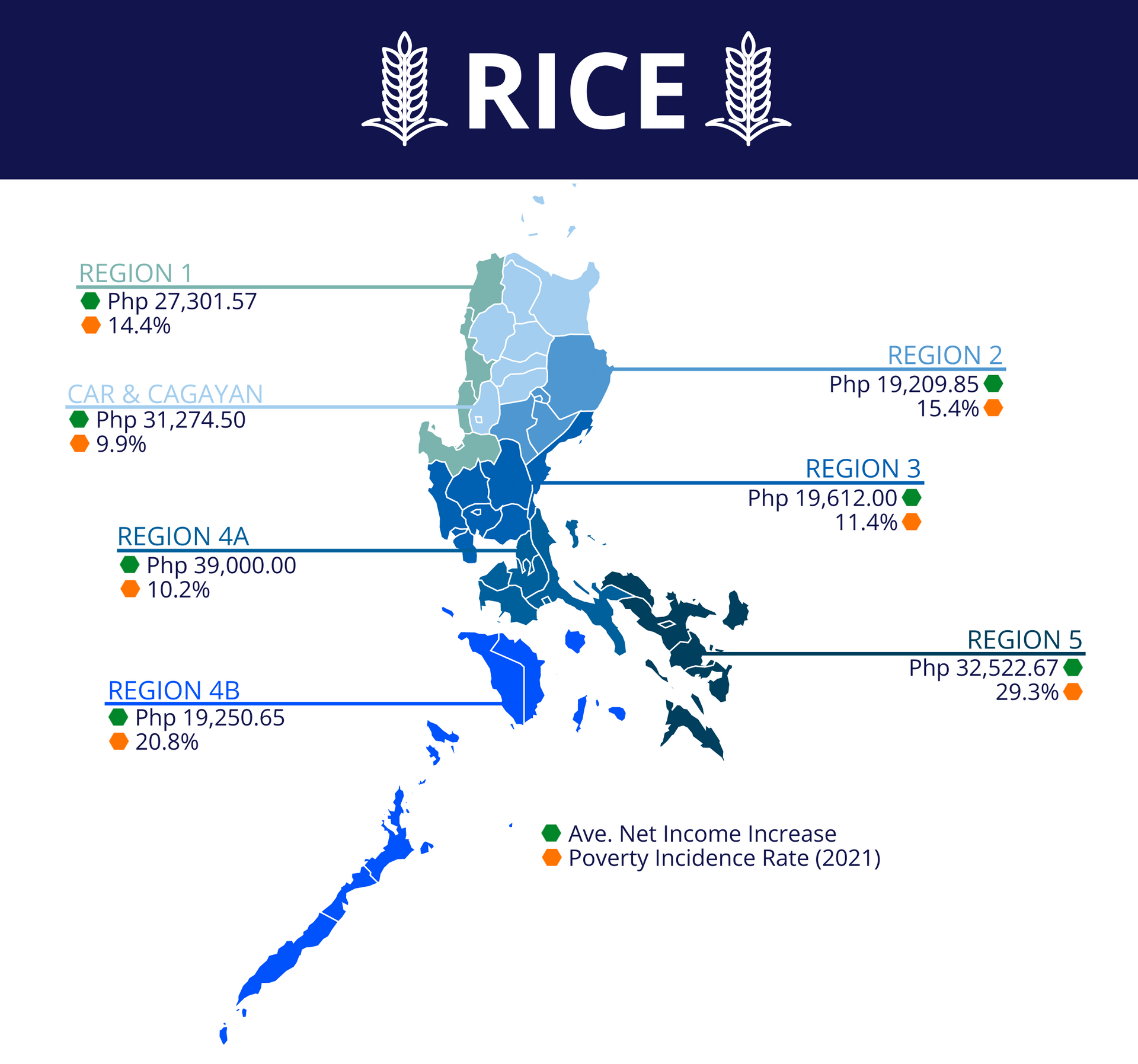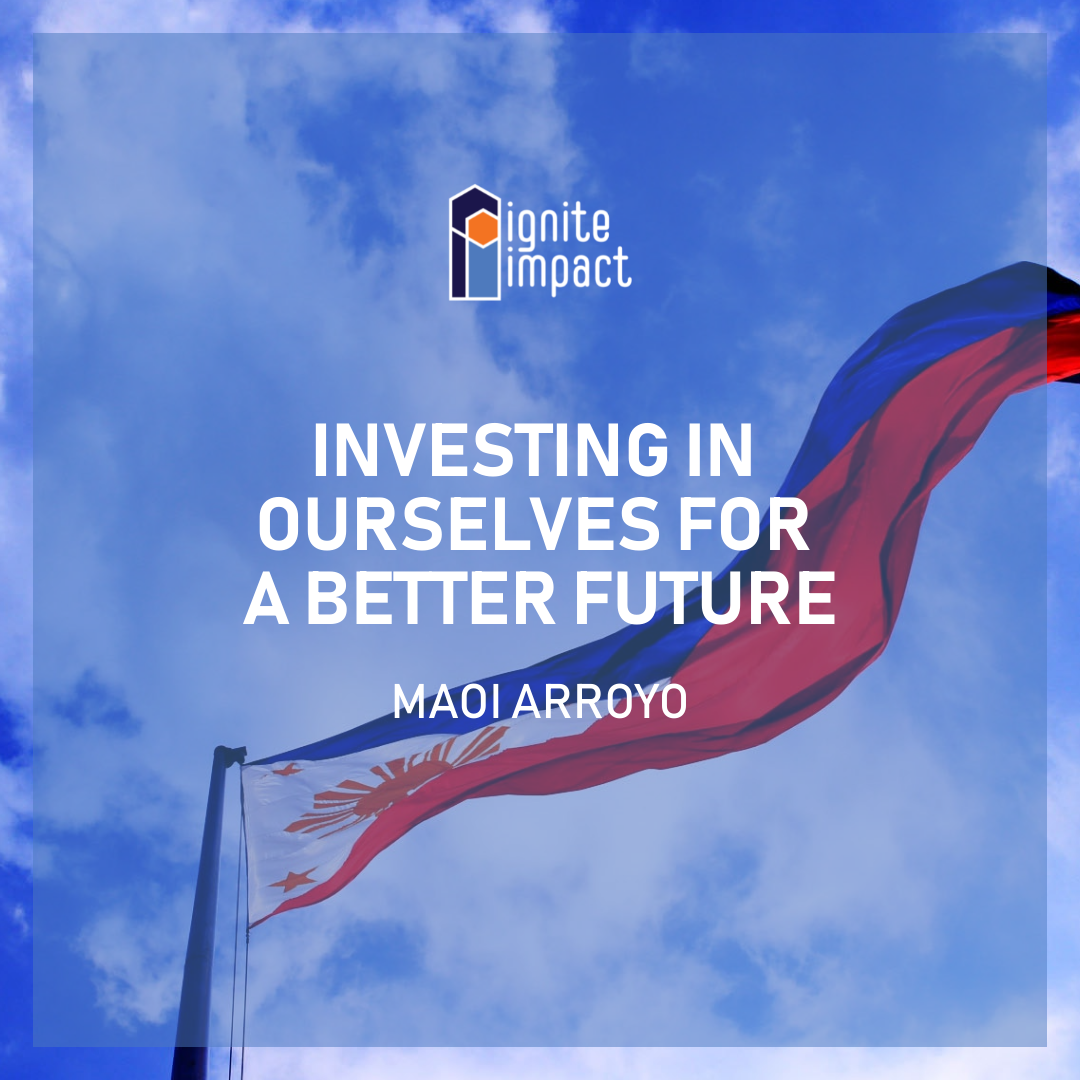Farmers in the Philippines, in particular rice farmers, are among the poorest in the country. With the rising prices of milled rice, some might think that farmers as a class are better off, but the reality that the rice value chain sees three changes of hands, with diminishing returns at each stage for the farmers. After the transfer of rice from farmer to trader to miller to wholesaler/retailer, an ordinary rice farmer only receives 5% of a share in profits for every 25kg sack of milled rice sold.

Not only do they get little in return for their crops, but they also have to account for rising input costs. The low prices of unmilled rice and high input costs juxtaposed with low farmer incomes farmers are hard pressed to break even. As a result, they have little to no incentive to farm and harvest. If the farmers were to sell their unmilled rice at P19 per kilogram – which is the current buying price of the National Food Authority (NFA) – they would lose even more money. Rice production is often impacted by by weather conditions and the constant conversion of farmland to roads or infrastructure. A further complication is that many farmers continue to use farming practices that do not maximize yield, deplete the soil and result in runoff and related pollution.
In an interview with Business World online, Teodoro C. Mendoza, an agronomist and a retired professor affiliated with the Institute of Crop Science at the University of the Philippines Los Baños, makes the claim that traditional fertilization practices are a part of the issue. “The farmers are not applying sufficient fertilizer due to its very high price. Even if there wasn’t a typhoon, prices would still rise because farmers could not put in sufficient fertilizer.”
The prices of a number of fertilizers have risen, with the price of urea specifically increasing by nearly 94%, according to the Food and Fertilizer Technology Center for the Asian and Pacific Region. This is due to multiple factors which include supply disruptions (for example, the conflict with Ukraine and Russia, where a large portion of the world’s fertilizers and fertilizer components are produced) as well as export restrictions (by China). Mendoza also noted that the price of a 1 kilogram bag of urea fertilizer had risen to P2,850 as of September 2022 from the previous price of P1,000 pre-fertilizer crisis. There is no indication the trend to higher prices will ease in the near term.
PhilRice, the Philippine Rice Research Institute, holds an annual “fertilizer derby” that encourages and promotes farmers to use biofertilzers and biostimulants in combination with inorganic fertilizer. This year several commercial demonstration trials were conducted during the PhilRice Fertilizer Derby.
Of those commercial demonstration trials, 60 were conducted using a product known as BioPrime 5-5-5. This is a biofertilizer that was developed over many years of research and development to help farmers use fewer synthetic fertilizers while allowing them to increase yield and revenue. The 60 farm trials using BioPrime have demonstrated that even small rice farmers can achieve balanced fertilization process using 50% less inorganic inputs but yielding significant gains in yield and revenue.
Although local farmers still use urea as part of their fertilization protocol, it’s use was decreased by 50% as part of these trials. If a farmer historically uses 10 bags of urea and 14-14-14 fertilizer – a “complete” fertilizer that uses equal percentages of nitrogen, phosphate, and potassium – the cost as of the date of this article is P2,850 per bag and rising. When using BioPrime a farmer needs only 5 bags of traditional fertilizer. Using only 35-grams of BioPrime, farmers are already producing more for less while reducing dependency on more harmful inorganic fertilizers and pesticides.
As of the end of the wet season of 2022, farms using Bioprime had an average yield increase of 39.01% for rice farming, resulting in a net income increase of P26,855.89.[1]
The PhilRice Fertilizer Derby concluded this year with an average yield of 6.20 tons per hectare with 50% less inorganic inputs, and an average net income of P66,528.28, by farmers who used BioPrime.
This is enough to significantly help our local farmers to improve their quality of life.
[1] Bioprime has been used in trials for other crops such as coffee and corn and has shown even greater yield increases for such crops.

The Philippine Statistics Authority releases an update on the country’s poverty incidence every three years. This is to show “the proportion of poor individuals whose per capita income is not sufficient to meet their basic food and non-food needs.” Based on their latest report from 2021, their numbers show that the average annual per capita poverty threshold in the seven regions where BioPrime’s demo farms are located is P28,684.71. With BioPrime’s biofertilizer product, the results of field trials using Bioprime demonstrate that local farmers in the regions could gain an average of P37,843.57 to their net income, a material improvement that would lift many families out of the poverty cycle.
To date, BioPrime has been deployed in over 20,000 hectares across the country, helping increase the crop yields and income of over 19,000 small-holder farmers. BioPrime shows great promise of delivering as the tangible impact of bringing thousands of farmers out of poverty while still preserving the environment. The Ignite Impact Fund is an investor in and partner to Bioprime.

Copyright Ignite Impact Fund, LLC



